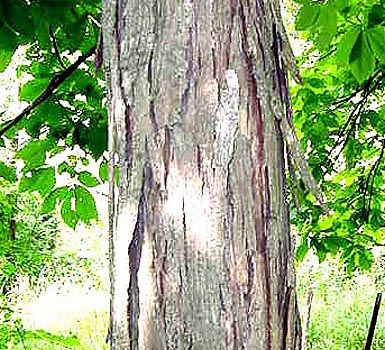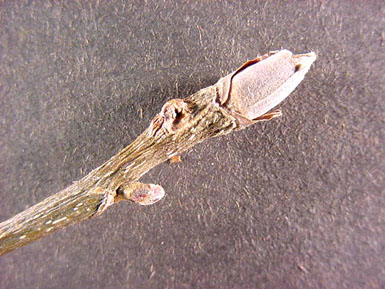Form: This is a medium size tree reaching 70-80 ft in height and 1-2 ft in diameter. It has a small open crown and normally a clear straight bole.
Leaves:
Arrangement: alternate, compound; 5-7 leaflets with terminal longest
Shape: ovate-lanceolate
Margin: finely serrate
Texture: glabrous above and pubescent below
Bark: The bark is thin and gray when young breaking into 1-3' long plates that are free at one end with age.

Twigs and buds: The twigs are reddish-brown, stout, and lenticels. The relatively large terminal bud has pubescent scales.*

Flowers and fruit: The nuts are slightly rounded and occur in pairs. The brown husk has a rough texture with indentations at the suture.
Distinguishing characteristics: Look for a large terminal bud characteristic of hickories, and the the large pieces of shedding bark.
Range: It occurs north as far as New York west to southern Wisconsin, south to Mississippi, and east to the Atlantic coast.
Silvics: Shagbark has intermediate tolerance to shade. It typically grows on moist and mesic upland sites.
Ecological and cultural importance: It produces a valuable wood used for furniture, flooring, and cabinetry. The mast is eaten by a variety of wildlife species.